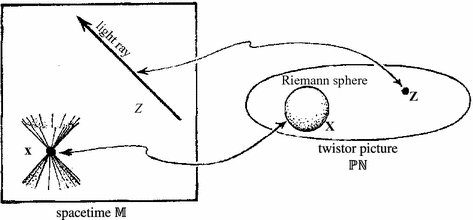Quanta magazine has an intriguing article by Siobhan Roberts out about Michael Atiyah, and what he’s up to these days. It mentions some new ideas about twistor theory I hadn’t heard about, that emerged from a conversation with Penrose, which Penrose wrote up as Palatial twistor theory and the twistor googly problem. Penrose explains the name:
The majestic ambiance of the unusual location (Buckingham Palace) of a brief discussion with Atiyah, no doubt provided inspiration for the initial thought that non-commutative twistor algebra should be the key to those subsequent developments described in this paper.
The Quanta article explains:
One day in the spring of 2013, for instance, as he sat in the Queen’s Gallery at Buckingham Palace awaiting the annual Order of Merit luncheon with Elizabeth II, Sir Michael made a match for his lifelong friend and colleague, Sir Roger Penrose, the great mathematical physicist.
Penrose had been trying to develop his “twistor” theory, a path toward quantum gravity that’s been in the works for nearly 50 years. “I had a way of doing it which meant going out to infinity,” Penrose said, “and trying to solve a problem out there, and then coming back again.” He thought there must be a simpler way. And right then and there Atiyah put his finger on it, suggesting Penrose make use of a type of “noncommutative algebra.”
“I thought, ‘Oh, my God,’” Penrose said. “Because I knew there was this noncommutative algebra which had been sitting there all this time in twistor theory. But I hadn’t thought of using it in this particular way. Some people might have just said, ‘That won’t work.’ But Michael could immediately see that there was a way in which you could make it work, and exactly the right thing to do.” Given the venue where Atiyah made the suggestion, Penrose dubbed his improved idea “palatial twistor theory.”
The article links to this recent talk about the role of beauty in mathematics, and describes some very speculative ideas he’s been working on, which I guess correspond to for instance this paper.
About this kind of work he has this to say:
If you try to direct science, you only get people going in the direction you told them to go. All of science comes from people noticing interesting side paths. You’ve got to have a very flexible approach to exploration and allow different people to try different things. Which is difficult, because unless you jump on the bandwagon, you don’t get a job.
Worrying about your future, you have to stay in line. That’s the worst thing about modern science. Fortunately, when you get to my age, you don’t need to bother about that. I can say what I like.
When asked if he’s risking his reputation this way, he has this sensible response:
My reputation is established as a mathematician. If I make a mess of it now, people will say, “All right, he was a good mathematician, but at the end of his life he lost his marbles.”
A friend of mine, John Polkinghorne, left physics just as I was going in; he went into the church and became a theologian. We had a discussion on my 80th birthday and he said to me, “You’ve got nothing to lose; you just go ahead and think what you think.” And that’s what I’ve been doing. I’ve got all the medals I need. What could I lose? So that’s why I’m prepared to take a gamble that a young researcher wouldn’t be prepared to take.
Update: For an alternate source of information about “palatial twistor theory”, see slides here, video here.


